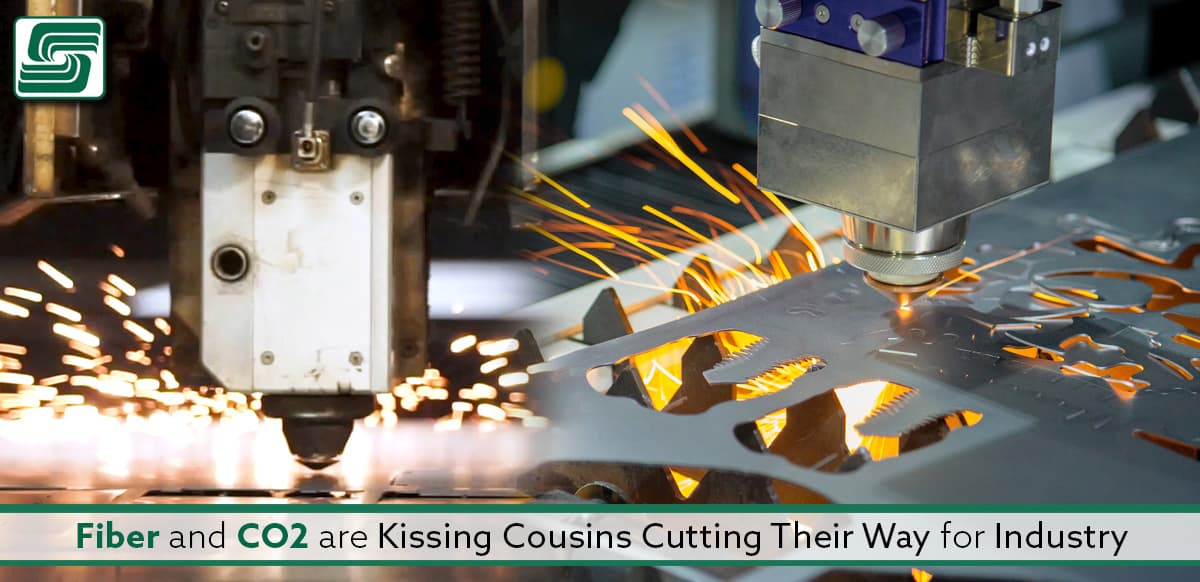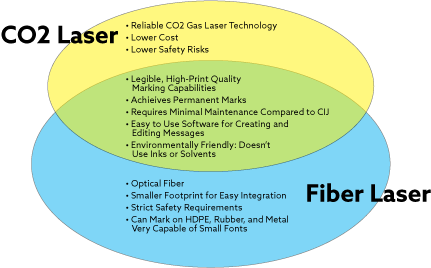
Fiber and CO2 laser cutting are two of the most popular methods used in industrial production today. Both have a history of development that has seen them become ever more efficient and powerful, and each has its unique application and advantages. Fiber laser cutting is a more recent technology, with a more concentrated beam that can cut thicker materials more quickly and with greater accuracy than CO2 laser cutting. CO2 laser cutting, on the other hand, is well-suited for cutting thinner materials such as paper, wood, and plastic.
Overview of fiber laser cutting
Fiber laser cutting is an industrial process that uses a laser beam to move material through a machine. During the cutting process, a laser beam heats the material so much that it vaporizes, forming a plasma. A plasma is a fast-moving gas that produces lots of heat but doesn’t produce much light. A laser beam focuses the plasma into a tight beam of intense heat, vaporizing the material. The heated material becomes a plasma, unlike a gas, which doesn’t go back together when the heat disappears. The laser beam moves the vaporized material through a machine, cutting the material. In fiber laser cutting, the laser beam is focused onto a fiber that carries the plasma and moves it through a machine. The laser beam is focused on the fiber because it allows it to concentrate the heat rather than needing to be at the exact temperature as the material being cut. Vaporizing the material at a high temperature is important, allowing the material to be cut without damaging the machine. High temperatures also mean that the material is vaporized, rather than being vaporized and then going back together, as a gas would, which means the material is more likely to be cut.
Overview of CO2 laser cutting
CO2 laser cutting, also known as laser cutting, is a method of material processing using a CO2 laser to cut various materials. Laser cutting is an extremely precise process that uses a high-powered CO2 laser to cut materials, either with or without using a water-cooled optical system.
For most materials, laser cutting is a quick and precise processing method. The laser beam’s high-powered beam cuts through a variety of different materials, including both tough and flexible materials such as steel, aluminum, and plastic.
CO2 laser cutting is a highly precise method of cutting materials. The laser beam’s focused beam cuts through various materials, including both tough and flexible materials. Using a low-powered beam alters the material’s texture and color. The laser beam cuts through different textures, including materials of varying thicknesses, which are very important in automotive manufacturing.
History of CO2 and fiber-cutting lasers
Carbon dioxide (CO2) lasers were first developed in the 1950s and have since grown to become one of the most commonly used tools in many industries. From cutting and engraving to welding, CO2 lasers have revolutionized how many industries operate, allowing for more precise and efficient production. Over the past few decades, fiber-cutting lasers have emerged as an alternative to CO2 lasers, making them a popular choice for many applications. With the improved performance of fiber-cutting lasers, it’s no wonder why they have become so popular in recent years. From their inception to the present day, CO2 and fiber-cutting lasers have been a key part of many industries, and their history is one of success and progress.
The invention of CO2 lasers
CO2 lasers go back to the 1950s, used during dentistry and surgery. However, it wasn’t until the early 1970s that they used these lasers for industrial purposes because they were extremely expensive to produce. It took time for manufacturers to develop a way to make them smaller and more portable. Eventually, these limitations decreased, and it wasn’t long before they became popular in several industries.
CO2 lasers are one of the most commonly used types of laser for cutting and engraving materials, using an ultraviolet laser with a wavelength of 248nm—ideal for cutting materials that are transparent or translucent, like glass, Plexiglas, and acrylic.
When cutting wood, these lasers produce precise cuts and engraving designs on the material, allowing customized products. The most common use of CO2 lasers in the wood industry is cutting wood veneer, which is useful for producing special shapes like doors or molding.
Metal manufacturers also use CO2 lasers for cutting and engraving, which is especially popular for cutting metal sheets in automotive manufacturing, ceramic, and other materials. Despite their popularity, these lasers aren't always the cheapest option.
The development of fiber-cutting lasers
Fiber-cutting lasers were first developed in the 1980s but didn’t make their way into the mainstream until the mid-1990s. Like their CO2 cousins, fiber-cutting lasers were also expensive to produce and used only in specialized markets because of the laser's high cost. However, over time, they improved, and manufacturers made them more accessible, contributing to the growing popularity of fiber-cutting lasers.
The quick rise of fiber-cutting lasers has helped because of their flexibility, making them an appealing option for many industries.
Comparison of fiber laser cutting and CO2 laser cutting
 History
History
- CO2 laser cutting has been around since the 1970s
- Fiber laser cutting has been around since the late 90s
- Beam Power
- Low-powered beam used in CO2 laser cutting
- High-powered beam used in fiber laser cutting
- Heat Production
- Low temperatures with low-powered beams used in CO2 laser cutting
- High temperatures with high-powered beams used in fiber laser cutting
- More focused heat with fiber laser cutting, enabling it to cut through harder materials
Pros and cons of CO2 and fiber lasers
- CO2 Lasers:
- More expensive
- Designed for cutting and engraving
- Can cut and engrave various materials
- Fiber Lasers:
- Cheaper
- Can't engrave as well or cut as many types of materials
- Less portable, requiring fiber optics
- Best for welding and drilling
- Both Types:
- Good for cutting and engraving materials
Applications of CO2 and fiber lasers
- CO2 and Fiber Lasers
- Ideal for cutting, engraving, drilling, welding, and burning holes in several materials
- Ideal for industries such as construction, utilities, manufacturing, and more
- Cutting and Engraving Synthetic Materials
- Ideal for cutting and engraving fiber optics, wood, cable, and plastics
- Cutting and Drilling Metals
- High-precision cuts and holes that are almost impossible to achieve with other tools
- Welding
- Produce high-quality welds at high temperatures with minimal distortion
Advantages of CO2 and fiber-cutting lasers
- CO2 and Fiber Cutting Lasers
- Widely used for cutting, engraving, welding, drilling, and cutting cables
- Attractive option for many industries
- Advantages
- High-precision cuts and engravings with minimal distortion
- Great for making custom products and producing high-quality welds
- Powerful and produce high-quality cuts and engravings
- Minimal training required
In Sum
The main difference between fiber and CO2 laser cutting is the laser beam’s power and focused heat. The laser beam’s power is higher with CO2 laser cutting, and the beam is more focused with fiber laser cutting. The laser beam’s power, beam’s focused heat, and beam’s more focused heat differ between fiber laser cutting and CO2 laser cutting.